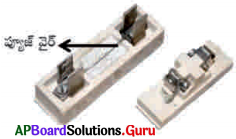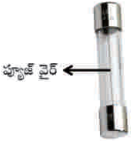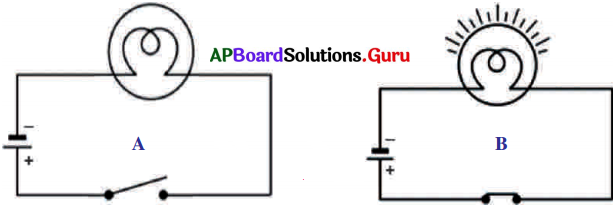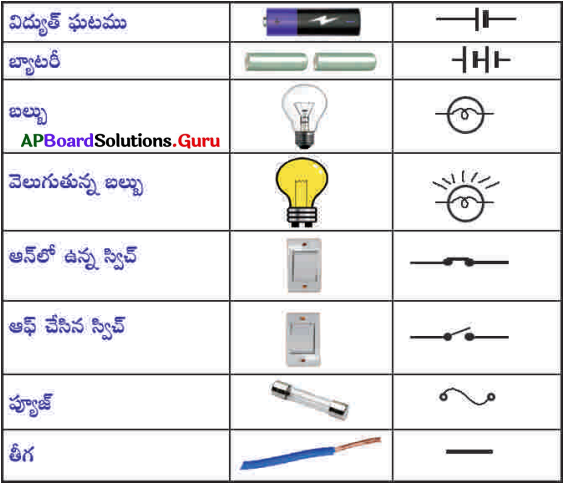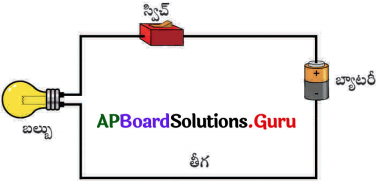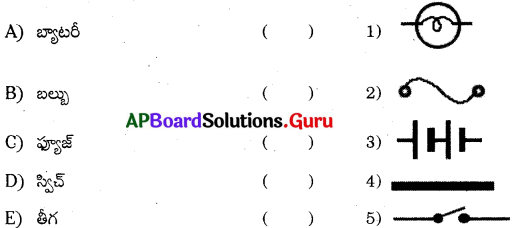These AP 10th Class Social Studies Important Questions 3rd Lesson ఉత్పత్తి, ఉపాధి will help students prepare well for the exams.
AP Board 10th Class Social 3rd Lesson Important Questions and Answers ఉత్పత్తి, ఉపాధి
10th Class Social 3rd Lesson ½ Mark Important Questions and Answers in Telugu Medium
1. ఉత్పత్తి అయిన అంత్య వస్తువుల, సేవల మార్కెటు విలువను ఏది నమోదు చేస్తుంది?
జవాబు:
స్థూల దేశీయోత్పత్తి (GDP),
2. మాధ్యమిక వస్తువు కానిది క్రింది వానిలో ఏది?
ఇడ్లీ, వడ్లు, ఊక, బియ్యం
జవాబు:
ఇడ్లీ.
3. భారతదేశంలో ఆర్థిక సం||రం అంటే?
జవాబు:
ఏప్రిల్ 1 నుండి మార్చి 31
4. భారతదేశంలో అత్యధిక జనాభాకు ఉపాధిని అందించే రంగం ఏది?
జవాబు:
వ్యవసాయం.
5. భారతదేశంలో అవ్యవస్థీకృత రంగంలో పనిచేస్తున్న వారి శాతము ఎంత?
జవాబు:
92%
6. 1972 నుండి స్థూల దేశీయోత్పత్తిలో ఏ రంగం యొక్క వాటా క్రమేణా తగ్గుతున్నది?
జవాబు:
వ్యవసాయం
![]()
7. ‘గనుల తవ్వకం’ ఏ రంగానికి చెందినది?
జవాబు:
ప్రాథమిక (వ్యవసాయ రంగం
8. మత్స్య పరిశ్రమ ఏ రంగానికి చెందినది?
జవాబు:
ప్రాథమిక (వ్యవసాయ) రంగం
9. అడవులు ఏ రంగానికి చెందినది?
జవాబు:
ప్రాథమిక (వ్యవసాయ) రంగం
10. ప్రకృతి ప్రధాన పాత్ర వహించే రంగం ఏది?
జవాబు:
ప్రాథమిక (వ్యవసాయ) రంగం
11.వస్తువులను నేరుగా తయారు చేయని రంగం ఏది?
జవాబు:
సేవా రంగం
12. క్రింది వానిలో అంతిమ వస్తువు కానిది ఏది?
కారు, నోటుబుక్, టి.వి., టైర్లు
జవాబు:
టైర్లు
13. క్రింది వానిలో మాధ్యమిక వస్తువు కానిది ఏది?
పెట్రోల్, మెటల్స్, కాగితపు గుజ్జు, కంప్యూటర్
జవాబు:
కంప్యూటరు
14. పూర్తి సామర్థ్యానికి తగినంతగా, తగినట్లుగా పని దొరకని స్థితిని ఏమంటారు?
జవాబు:
అల్ప ఉపాధి
15. గత 50 సం||రాలలో అభివృద్ధి చెందిన దేశాలలో ఏ రంగం నుండి ఏ రంగానికి ప్రాధాన్యత మారుతుంది?
జవాబు:
పారిశ్రామిక రంగం నుంచి సేవల రంగానికి
16. మొత్తం ఉత్పత్తిలో ఏ రంగం ప్రముఖ స్థానంలో ఉంది?
జవాబు:
సేవల రంగం
17. బ్యాంకులు, జీవిత భీమా, హోటళ్ళు, వ్యాపారం, రవాణా, ప్రసారాలు, ఆర్థిక, స్థిరాస్తి, ప్రజాసామాజిక, వ్యక్తిగత సేవలు ఏ రంగానికి చెందుతాయి?
జవాబు:
సేవల రంగం
18. కనబడని అల్ప ఉపాధిని ఏమంటారు?
జవాబు:
ప్రచ్ఛన్న నిరుద్యోగం.
19. వ్యవస్థీకృత, అవ్యవస్థీకృత రంగాలలో పనిచేస్తున్న వారి శాతం వరుసగా ఎంత?
జవాబు:
8%, 92%.
20. ఆర్ధిక వ్యవస్థను ప్రధానంగా ఎన్ని రంగాలుగా విభజించారు?
జవాబు:
3 రంగాలు.
21. GDP ని విస్తరింపుము.
జవాబు:
స్థూల దేశీయోత్పత్తి (గ్రాస్ డొమెస్టిక్ ప్రొడక్ట్)
22. ప్రస్తుతం అభివృద్ధి చెందిన దేశాలుగా పరిగణించ
జవాబు:
వ్యవసాయం
![]()
23. వ్యవసాయం, పరిశ్రమలు, సేవలు అనే మూడు రంగాల ఉత్పత్తి కలిపితే ఏమి వస్తుంది?
జవాబు:
స్థూల దేశీయోత్పత్తి
24. భారతదేశంలో ఇప్పటికి ఇదే ప్రధాన ఉపాధి రంగంగా ఉంది.
జవాబు:
వ్యవసాయం
25. దేశంలోని కార్మికులలో సగం కంటే ఎక్కువ మంది వ్యవసాయ రంగంలో ఉండి ………. వంతు ఉత్పత్తికి మాత్రమే దోహదం చేస్తున్నారు.
జవాబు:
1/6 వంతు
26. GDP లో …….. శాతం వాటా ఉన్న పారిశ్రామిక, సేవారంగాలు మొత్తం కార్మికులలో దాదాపు సగానికి మాత్రమే ఉపాధి కల్పిస్తున్నాయి.
జవాబు:
75%
27. ప్రచ్ఛన్న నిరుద్యోగుల్లోని వారు కొంత మంది వేరే పనికి వెళితే ఉత్పత్తిలో ఎలాంటి మార్పు వస్తుంది?
జవాబు:
మార్పు ఉండదు.
28. ఏ రంగంలోని ఉద్యోగాలు అందరూ కోరుకుంటారు?
జవాబు:
వ్యవస్థీకృత రంగం
29. భారతదేశంలోని గ్రామీణ ప్రాంతంలోని ఎంత శాతం కుటుంబాలు సన్న, చిన్న కారు రైతుల కిందికి వస్తాయి?
జవాబు:
80%
30. కేవలం 8% వ్యవస్థీకృత రంగంలో ఉన్న కార్మికులు మొత్తం వస్తువులు, సేవలలో ఎంత శాతం ఉత్పత్తికి దోహదం చేశారు?
జవాబు:
50%
31. ఉపాధి షరతులు ఉండి, నమ్మకంగా పని ఉండే ప్రదేశాలు లేదా వ్యాపారాలకు ఏ రంగంగా వ్యవహరిస్తారు?
జవాబు:
వ్యవస్థీకృత
32. అవ్యవస్థీకృత రంగంలోని కార్మికులలో సగం శాతం మంది ఎటువంటి ఉపాధి పొందుతున్నారు?
జవాబు:
స్వయం ఉపాధి
33. ఇతర వస్తువుల తయారీలో ఉపయోగించే వస్తువులను ఏమంటారు?
జవాబు:
మాధ్యమిక వస్తువులు
34. భారతదేశంలో ఇంతకు ముందు వ్యవసాయ క్షేత్రములో పనిచేసిన వాళ్లు ప్రస్తుతం వేటిలో ఎక్కువగా పని చేస్తున్నారు?
జవాబు:
కర్మాగారాలలో
35. 39 సం||రాల కాలంలో గణనీయంగా క్షీణించిన రంగం బడుతున్నా దేశం అభివృద్ధి తొలిదశల్లో ఏ రంగం ఏది? మరియు దాని అనుబంధ రంగాలు వాటి GDP పెరుగుదలకు అధికంగా దోహదం చేస్తాయి?
జవాబు:
వ్యవసాయ రంగం
36. 2011 జనాభా లెక్కల ప్రకారం 120 కోట్ల జనాభాలో పనిచేస్తున్న వారి సంఖ్య ఎంత?
జవాబు:
46 కోట్లు
37. నిర్ణీత సమయ ప్రకారం పనిచేయటం, సెలవు దినాలు ఉపయోగించుకోవటం ఏ రంగం లక్షణం?
జవాబు:
వ్యవస్థీకృత రంగం
38. క్రింది వారిలో అవ్యవస్థీకృత రంగ కార్మికులకు ఉదాహరణ కానిది రోజు వారీ కూలీలు, బజారులో అమ్మకాలు చేసే వాళ్లు, బరువులు మోసేవాళ్లు, ప్రభుత్వ కంపెనీలో ఉద్యోగి.
జవాబు:
ప్రభుత్వ కంపెనీ ఉద్యోగి.
39. క్రింది వానిని సరిగా జతపరచండి.
i) ప్రాథమిక రంగం ( ) a) అభద్రత
ii) ద్వితీయ రంగం ( ) b) సేవలు
iii) తృతీయ రంగం ( ) c) భద్రత
iv) వ్యవస్థీకృత రంగం ( ) d) పరిశ్రమలు
v) అవ్యవస్థీకృత రంగం ( ) e) వ్యవసాయం
జవాబు:
i-e, ii-d, iii-b, iv- c, v-a
40. క్రింది వానిని సరిగా జతపరచండి.
i) కొరియర్ బాయ్ ( ) a) సేవారంగం
ii) భవన నిర్మాణ ( ) b) అవ్యవస్థీకృత కార్మికుడురంగం
iii) ప్రభుత్వ ఉద్యోగి ( ) c) వ్యవస్థీకృతరంగం
iv) కారు ( ) d) మాధ్యమిక వస్తువు
v) టైర్లు ( ) e) అంత్య వస్తువు
జవాబు:
i – a, ii – b, iii – c, iv – e, v – d
41. సరియైన జతను ఎంచుకొని, రాయండి.
i) వ్యవస్థీకృత రంగంలో ఉపాధి ( ) a) 92%
ii) అవ్యవస్థీకృత రంగంలో ఉపాధి ( ) b) 8%
iii) వ్యవసాయ రంగంలో ఉపాధి ( ) c) 53%
iv) పరిశ్రమల రంగంలో ఉపాధి ( ) d) 22%
v) సేవల రంగంలో ఉపాధి ( ) e) 25%
జవాబు:
i – b, ii – a, iii – c, iv – d, v – e
42. 2009-10 సం||రంలో ఎంత శాతం గ్రామీణ కార్మికులు వ్యవసాయ రంగంలో ఉన్నారు?
జవాబు:
68%
![]()
43. 2009-10 సం||రంలో ఎంత శాతం గ్రామీణ కార్మికులు పారిశ్రామిక రంగంలో ఉన్నారు?
జవాబు:
17%
44. 2009-10 సం||రంలో ఎంత శాతం గ్రామీణ కార్మికులు సేవల రంగంలో ఉన్నారు?
జవాబు:
15%
45. 2009-10 సం||రంలో ఎంత శాతం మహిళా కార్మికులు వ్యవసాయ రంగంలో ఉన్నారు?
జవాబు:
69%
46. 2009-10 సం||రంలో ఎంత శాతం మహిళా కార్మికులు పారిశ్రామిక రంగంలో ఉన్నారు?
జవాబు:
16%
47. 2009-10 సం॥రంలో ఎంత శాతం మహిళా కార్మికులు సేవల రంగంలో ఉన్నారు?
జవాబు:
15%
48. 2009-10 సం||రంలో వ్యవసాయ రంగంలో ఎంత శాతం మంది ఉపాధి పొందుతున్నారు?
జవాబు:
53%
49. 2009-10 సం||రంలో పారిశ్రామిక రంగంలో ఎంత శాతం మంది ఉపాధి పొందుతున్నారు?
జవాబు:
22%
50. 2009-10 సం||రంలో సేవల రంగంలో ఎంత శాతం మంది ఉపాధి పొందుతున్నారు?
జవాబు:
25%
51. 2009-10 సం||రంలో GDPలో అత్యధిక వాటా ఏ పై వాక్యా లలో సరైనది ఏది? రంగం కలిగి ఉంది?
జవాబు:
సేవల రంగం
52. 2009-10 సం||రంలో GDPలో వ్యవసాయ రంగం వాటా ఎంత?
జవాబు:
17%
![]()
53. 2009-10 సం||రంలో GDPలో పారిశ్రామిక రంగం వాటా ఎంత?
జవాబు:
26%
54. 2011-12 ఆర్థిక సం||రంలో వ్యవసాయ రంగంలో పనిచేస్తున్న గ్రామీణ కార్మికుల శాతం ఎంత?
జవాబు:
67%
55. 2011-12 ఆర్థిక సం||రంలో పారిశ్రామిక రంగంలో పనిచేస్తున్న పట్టణ కార్మికుల శాతం ఎంత?
జవాబు:
31%
56. 2011-12 ఆర్థిక సం||రంలో సేవల రంగంలో పనిచేస్తున్న పట్టణ కార్మికుల శాతం ఎంత?
జవాబు:
60%
56. a) ప్రచ్ఛన్న నిరుద్యోగం ఎక్కువగా ఏ రంగంలో కన్పిస్తుంది?
జవాబు:
వ్యవసాయ రంగం
57. భారతదేశంలో సేవారంగమునకు సంబంధించిన వ్యాఖ్యల సత్యము.
జవాబు:
→ సేవారంగం అభివృద్ధి చెందుతుండగా ఆ రంగంలో అన్ని కార్యకలాపాలు కూడా సమానంగా అభివృద్ధి చెందుతున్నాయి.
→ సేవారంగం అభివృద్ధి చెందుతున్నప్పటికి ఆ రంగంలో అన్ని కార్యకలాపాలు సమానంగా అభివృద్ధి చెందడం లేదు.
→ సేవారంగం ఉన్నత విద్యావంతులకు మాత్రమే ఉపాధిని కల్పిస్తుంది.
→ GDPలో సేవారంగం యొక్క వాటా చాలా తక్కువగా ఉంది.
జవాబు:
సేవారంగం అభివృద్ధి చెందుతున్నప్పటికి ఆ రంగంలో అన్ని కార్యకలాపాలు సమానంగా అభివృద్ధి చెందడం లేదు.
58. క్రింది వాక్యాలను పరిగణించండి.
i) గత 50సం||రాలలో అభివృద్ధి చెందిన దేశాలలో పారిశ్రామిక రంగం నుంచి సేవల రంగానికి ప్రాధాన్యత మారుతోంది.
ii) అయితే మొత్తం ఉత్పత్తిలో సేవారంగం ప్రముఖ స్థానంలో ఉంది.
A) (i) మాత్రమే
B) (ii) మాత్రమే
C) (i) మరియు (ii)
D) రెండూ కావు
జవాబు:
C) (I) మరియు (ii)
59. క్రింది వాక్యాలను పరిగణించండి.
i) ఆదాయ స్థాయి ముఖ్యమైనప్పటికి అభివృద్ధిని సూచించటానికి ఇదొక్కటే సరిపోదు.
ii) మానవాభివృద్ధి నివేదిక విద్యాస్థాయి, అరోగ్యస్థితి కన్నా తలసరి ఆదాయానికి ఎక్కువ ప్రాధాన్యత
ఇచ్చింది.
– పై వాక్యా లలో సరైనది ఏది ?
A) (1) మాత్రమే B) (ii) మాత్రమే
C) (1) మరియు (ii) D) రెండూ కావు
జవాబు:
A (i) మాత్రమే.
60. శ్రీనివాస్ ప్రభుత్వ ఉద్యోగి అయితే అతనికి వర్తించని అంశం ఏది?
→ భవిష్య నిధి
→ జీతంతో కూడిన సెలవు
→ సక్రమ జీతం
→ పరిమితిలేని పనివేళలు
జవాబు:
పరిమితిలేని పనివేళలు
61. క్రింది వాక్యాలను పరిగణించండి.
i) వినియోగానికి సిద్ధంగా ఉన్న వస్తువును అంత్య వస్తువు అంటారు.
ii) GDP లో అంత్య వస్తువు, మాధ్యమిక వస్తువులను కలిపి లెక్కిస్తారు.
పై వాక్యా లలో సరైనది ఏది?
A) (1) మాత్రమే
B) (ii) మాత్రమే
C) (i) మరియు (ii)
D) రెండూ కావు
జవాబు:
A (i) మాత్రమే.
62. క్రింది కార్యకలాపాల్లో (వ్యవసాయం) ప్రాథమిక రంగానికి చెందనిది ఏది?
A) రఘుపతి గనిలో పనిచేసే కార్మికుడు
B) ఈశ్వరమ్మ చేపలు అమ్మే వ్యక్తి
C) శైలజ అటవి ఉత్పత్తులు అమ్ముతుంది.
D) లక్ష్మీ ఇంటి దగ్గరలోని ప్లాస్టిక్ కార్మాగారంలో పని చేస్తుంది.
జవాబు:
D) లక్ష్మీ ఇంటి దగ్గరలోని ప్లాస్టిక్ కార్మాగారంలో పని చేస్తుంది.
![]()
క్రింది వాక్యాలు పరిగణించండి.
63. i) పూర్తి సామర్థ్యానికి తగినట్లుగా పని ఉండటాన్ని అల్ప ఉపాధి అంటారు.
ii) కనపడని అల్ప ఉపాధిని ప్రచ్ఛన్న నిరుద్యోగం అంటారు.
పై వాక్యా లలో సరైనది ఏది?
A) (i) మాత్రమే
B) (ii) మాత్రమే
C) i) మరియు (ii)
D) రెండూ కావు
జవాబు:
C (i) మరియు (iii)
64. క్రింది వానిలో భిన్నంగా ఉన్న దానిని గుర్తించి, రాయండి.
పోస్టమ్యాన్, చెప్పులు కుట్టేవ్యక్తి, సైనికుడు, పోలీసు
జవాబు:
చెప్పులు కుట్టేవ్యక్తి
ఇవ్వబడిన పట్టికను పరిశీలించి క్రింది ప్రశ్నకు సమాధానము వ్రాయుము.

65. ఏ రంగంలో ఉత్పత్తి రెండింతలు పెరిగింది?
జవాబు:
పారిశ్రామిక రంగం
66. ఏ రంగం ఎక్కువ మందికి ఉపాధి కల్పిస్తుంది?
జవాబు:
వ్యవసాయ రంగం
ఇవ్వబడిన పట్టికను పరిశీలించి క్రింది ప్రశ్నకు సమాధానము వ్రాయుము.
| రంగం | వాటా (మొత్తం శాతం) | |
| ఉపాధిస్తూల దేశీయోత్పత్తి | ||
| వ్యవస్థీకృత | 8 | 58 |
| అవ్యవస్థీకృత | 92 | 50 |
| మొత్తం | 100 | 100 |
67. ఏ రంగంలో ఉపాధి ఎక్కువగా ఉండి, ఉత్పత్తి తక్కువగా ఉంది?
జవాబు:
అవ్యవస్థీకృత రంగం
68. ఏ రంగంలో ఉపాధి తక్కువగా ఉంది, ఉత్పత్తి ఎక్కువగా ఉంది?
జవాబు:
వ్యవస్థీకృత రంగం.
ఇవ్వబడిన పట్టికను పరిశీలించి క్రింది ప్రశ్నకు సమాధానము వ్రాయుము.
| రంగం | నివాస స్థానం | |
| గ్రామీణ | పట్టణ | |
| వ్యవసాయ రంగం | 68 | 8 |
| పారిశ్రామిక రంగం | 17 | 34 |
| సేవల రంగం | 15 | 58 |
| మొత్తం | 100 | 100 |
69. గ్రామీణ ప్రాంతంలో ఎక్కువ మందికి ఉపాధి కల్పిస్తున్న రంగం ఏది?
జవాబు:
వ్యవసాయ రంగం
70. పట్టణ ప్రాంతంలో ఎక్కువ మంది ఏ రంగంలో పని చేస్తున్నాయి?
జవాబు:
సేవల రంగం
71. ప్రచ్ఛన్న నిరుద్యోగంలో ఉపాంత ఉత్పత్తి ఎంత?
జవాబు:
శూన్యం.
10th Class Social 3rd Lesson 1 Mark Important Questions and Answers in Telugu Medium
ప్రశ్న 1.
అవ్యవస్థీకృత రంగంలోని కార్మికుల పరిస్థితులను మెరుగుపరచడానికి కొన్ని సంస్కరణలను సూచించుము.
జవాబు:
- వేతనం పెంచటం
- ఉద్యోగ భద్రత కల్పించటం
- ఎక్కువ పనికి ఎక్కువ వేతనం ఇవ్వటం
- పనిచేసే ప్రదేశంలో సౌకర్యాలను మెరుగుపరచటం
- వైద్య సదుపాయాలు కల్పించటం
- అనారోగ్య సెలవులకు అవకాశాన్ని కల్పించటం
ప్రశ్న 2.
మాధ్యమిక వస్తువులకు ఉదాహరణలు రాయండి.
జవాబు:
1) వరిధాన్యం (వడ్లు),
ii) బియ్యం,
iii) దారం,
iv) రబ్బరు అందు చేతులు
![]()
ప్రశ్న 3.
అల్ప ఉపాధి అనగానేమి?
జవాబు:
కార్మికులకు తమ పూర్తి సామర్థ్యానికి తగినట్లుగా, తగినంతగా పని దొరకని స్థితిని “అల్ప ఉపాధి” అంటారు.
ప్రశ్న 4.
అల్ప ఉపాధికి ఒక ఉదాహరణ రాయండి.
జవాబు:
అల్ప ఉపాధికి ఉదాహరణలు :
- తమ సామర్థ్యం మేరకు పని దొరకకపోయినా పని చెయ్యడం అనేది వ్యవసాయ రంగంలో ఎక్కువగా ఉండటం.
- సేవా రంగం – రంగులు వెయ్యటం, నీటి పైపుల పని, మరమ్మతులు చెయ్యటం.
ప్రశ్న 5.
అవ్యవస్థీకృత రంగంలో ఏయే అంశాలు ఉంటాయి?
జవాబు:
అవ్యవస్థీకృత రంగంలో అంశాలు : తక్కువ వేతనం, ఉద్యోగ భద్రత లేకపోవడం, వైద్య, ఆరోగ్య సౌకర్యాల లేమి, ఆర్జిత సెలవులు లేకపోవడం, భవిష్య నిధి, బీమా వంటివిల ఏకపోవడం మొదలగునవి.
ప్రశ్న 6.
కింది ‘పై’ చార్టును పరిశీలించి ఇచ్చిన ప్రశ్నలకు సమాధానాలు రాయండి.
మూడు రంగాలలో ఉపాధి వాటా 2011-12
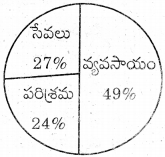
ఎ) అత్యల్ప ఉపాధి అవకాశాలను కల్పించే రంగం ఏది?
జవాబు:
అత్యల్ప ఉపాధి అవకాశాలను కల్పించే రంగం : పరిశ్రమలు.
బి) వ్యవసాయ రంగంలో అధిక ఉపాధికి రెండు కారణాలను పేర్కొనండి.
జవాబు:
వ్యవసాయ రంగంలో అధిక ఉపాధికి రెండు కారణాలు: –
- పారిశ్రామిక, సేవారంగంలో తగినంత ఉపాధి కల్పించబడకపోవడం.
- అక్షరాస్యతతో సంబంధం లేకుండా గ్రామీణ ప్రజలు వ్యవసాయంపై ఆధారపడటం.
- ఎక్కువ పనులకు అవకాశం సులభంగా లభించడం.
ప్రశ్న 7.
అంతిమ వస్తువులకు రెండు ఉదాహరణలు ఇవ్వండి.
జవాబు:
అంతిమ వస్తువులకు ఉదాహరణలు : ఇడ్లీ, దోశ, కారు, కంప్యూటర్, నోటు పుస్తకము మొదలైనవి.
ప్రశ్న 8.
క్రింద పట్టికలో ఇవ్వబడిన సమాచారమును పరిశీలించి, ప్రశ్నలకు సమాధానాలు రాయండి.
పట్టిక : మూడు రంగాలలో ఉపాధి మరియు స్థూల దేశీయోత్పత్తి వాటా
| రంగము | ఉపాధి (%) 2011-12 | స్థూల దేశీయోత్పత్తి (%) 2011-12 |
| వ్యవసాయం | 49 | 16 |
| పరిశ్రమలు | 24 | 26 |
| సేవలు | 27 | 58 |
a) స్థూల దేశీయోత్పత్తిలో వ్యవసాయరంగం వాటా ఎంత?
జవాబు:
స్థూల దేశీయోత్పత్తిలో వ్యవసాయరంగం వాటా – 16%
b) స్థూల దేశీయోత్పత్తిలో ఎక్కువ వాటా కల్గి ఉన్నప్పటికీ, సేవా రంగంలో ఉపాధి తక్కువగా ఉండుటకు కారణం ఏమిటి?
జవాబు:
స్థూల దేశీయోత్పత్తిలో ఎక్కువ వాటా కల్గి ఉన్నప్పటికి సేవా రంగంలో ఉపాధి తక్కువగా ఉండుటకు కారణం
- నైపుణ్యం లేకపోవడం.
- ఉపాధి అవకాశాలు అందుబాటులో లేకపోవడం.
ప్రశ్న 9.
ఇవ్వబడిన పట్టికను పరిశీలించి క్రింది ప్రశ్నకు సమాధానము వ్రాయుము.
| రంగం | ఉపాధి (%) | |
| 1972-73 | 2009-10 | |
| వ్యవసాయం | 74% | 53% |
| పరిశ్రమలు | 11% | 22% |
| సేవలు | 15% | 25% |
ప్రశ్న : ఉపాధి కల్పన ఏ రంగంలో తగ్గుతున్నది?
జవాబు:
వ్యవసాయ రంగం
![]()
ప్రశ్న 10.
ప్రాథమిక రంగం అని దేనినంటారు?
జవాబు:
ఉత్పత్తి ప్రక్రియలో ప్రకృతి ప్రధాన పాత్ర వహించే వ్యవసాయం, మత్స్య పరిశ్రమ, అటవీ, గనులకు సంబంధించిన పనులు మొదలైనవి “ప్రాథమిక రంగం” అంటారు.
ప్రశ్న 11.
ద్వితీయ రంగం అనగానేమి?
జవాబు:
యంత్రాలు, పరికరాలు ఉపయోగించి వస్తువులు ఉత్పత్తి చేయడం, ఇతర పరిశ్రమలను “ద్వితీయ రంగం” అంటారు.
ప్రశ్న 12.
తృతీయ రంగంలోని అంశాలేవి?
జవాబు:
తృతీయ రంగంను “సేవా రంగం” అని కూడా అంటారు. వస్తువులను నేరుగా తయారుచేయకుండా వస్తువుల ఉత్పత్తికి, ప్రజలకు అవసరమైన సేవలు అందించే కార్యకలాపాలు.
ప్రశ్న 13.
స్థూల దేశీయోత్పత్తి అనగానేమి?
జవాబు:
ఒక సంవత్సర కాలంలో ఆర్థిక వ్యవస్థలో ఉత్పత్తి చేసిన అన్ని అంతిమ వస్తు, సేవల విలువే ‘స్థూల దేశీయోత్పత్తి” (GDP) అంటారు.
ప్రశ్న 14.
ఆర్థిక సంవత్సరమని ఏ నెల నుండి ఏ నెల దాకా అంటారు?
జవాబు:
ఏప్రిల్ నుండి (తర్వాతి) మార్చి వరకు.
ప్రశ్న 15.
ప్రచ్ఛన్న నిరుద్యోగం అనగానేమి?
జవాబు:
అందరూ పనిచేస్తున్నట్టు ఉంటుంది కానీ ఎవ్వరికీ తమ పూర్తి సామర్థ్యానికి తగినట్టుగా పని ఉండటం లేదు. ఈ రకమైన అల్ప ఉపాధి ఎవరికీ కనబడదు, అందుకే దానిని “ప్రచ్ఛన్న నిరుద్యోగం” అంటారు.
ప్రశ్న 16.
వ్యవస్థీకృతరంగం అనగానేమి?
జవాబు:
కొన్ని క్రమబద్ధ విధానాలు, ప్రక్రియలు ఉండి నిర్వచనీయమైన పద్ధతిలో ఉత్పత్తి, ఉపాధి కల్పనలున్న రంగంను “వ్యవస్థీకృత రంగం” అంటారు.
ఉదా :
భారీ పరిశ్రమలు.
ప్రశ్న 17.
అవ్యవస్థీకృత రంగం అనగానేమి? ఒక ఉదాహరణ నిమ్ము.
జవాబు:
ఉద్యోగాలలో కాని, జీతాలలో కాని ఒక నియత పద్ధతిలేని కార్మికులు, కర్షకులు ఉండే చిన్న చిన్న సంస్థలున్న రంగంను “అవ్యవస్థీకృత రంగం” అంటారు.
ఉదా :
చేనేత పరిశ్రమ, బీడీ పరిశ్రమ.
ప్రశ్న 18.
అంత్యవస్తువులు అని వేనినంటారు? ఉదాహరణనిమ్ము.
జవాబు:
వినియోగానికి సిద్ధంగా ఉన్న వస్తువులు.
ఉదా :
టీవీ, కారు, నోటు పుస్తకం.
ప్రశ్న 19.
మాధ్యమిక వస్తువులు అని వేనినంటారు? ఉదాహరణనిమ్ము.
జవాబు:
వినియోగ వస్తువుల తయారీలో ఉపయోగించే వస్తువులను “మాధ్యమిక వస్తువులు” అంటారు.
ఉదా : గోధుమపిండి (బిస్కట్ల తయారీ, రొట్టెల తయారీలో ఉపయోగిస్తారు.)
![]()
ప్రశ్న 20.
భారతదేశంలో వ్యవస్థీకృత రంగంలో, అవ్యవస్థీకృత రంగంలో ఎంత శాతం పనిచేస్తున్నారు?
జవాబు:
92% మంది అవ్యవస్థీకృత రంగంలోను, 8% మంది వ్యవస్థీకృత రంగంలోను పనిచేస్తున్నారు.
10th Class Social 3rd Lesson 2 Marks Important Questions and Answers in Telugu Medium
ప్రశ్న 1.
వ్యవస్థీకృత రంగము అవ్యవస్థీకృత రంగము కంటే ఏ విధంగా భిన్నమైనది?
జవాబు:
- ఉపాధి షరతులు ఉండి, నమ్మకంగా పని ఉండే ప్రదేశాలు లేదా వ్యాపారాలను వ్యవస్థీకృత రంగంగా వ్యవహరిస్తారు.
- ఉపాధి షరతులు ఏమీ లేకుండా ఉండే చిన్న చిన్న సంస్థలను అవ్యవస్థీకృత రంగం అంటారు. ఇవి ప్రభుత్వ నియంత్రణలో ఉండవు. నియమ నిబంధనలు ఉంటాయి. కానీ వీటిని అనుసరించరు.
కనుక వ్యవస్థీకృత రంగము అవ్యవస్థీకృత రంగము కంటే భిన్నమైనది అని చెప్పవచ్చును.
ప్రశ్న 2.
ఈ క్రింది పట్టిక పరిశీలించి, ప్రశ్నలకు సమాధానాలు రాయండి.
కింది పట్టిక భారతదేశంలో 1972-73 మరియు 2009-10 సంవత్సరాలలో వివిధ రంగాలలో ఉపాధి పొందిన వారి వివరాలను తెలుపుతుంది.

a) పై పట్టికలో నీవు గమనించిన ప్రధాన మార్పులేవి?
b) ఈ మార్పులకు గల కారణాలేవి?
జవాబు:
a)
- వ్యవసాయ రంగంలో ఉపాధి అవకాశాలు 74% నుండి 530కి తగ్గిపోయాయి.
- పారిశ్రామిక రంగంలో 11% నుండి 22% శాతంకు, అంటే దాదాపు రెట్టింపు.
- సేవల రంగంలో 15% నుండి 25% శాతంకు ఉపాధి అవకాశాలు పెరిగాయి.
b) ఈ మార్పునకు కారణాలు:
- విత్తనాల ధరలు పెరగడం, వర్షాలు తగ్గడం, విద్యుత్ కోతలు, మద్దతు ధర లభించకపోవడం మొదలైన కారణాల వలన వ్యవసాయం లాభసాటిగా లేకపోవడంతో ఈ రంగంలో క్షీణత ఏర్పడింది.
- ప్రైవేట్ రంగం విస్తరించడంతో పరిశ్రమల స్థాపన పెరిగిపోయింది.
- సమాచార, శాస్త్ర సాంకేతిక రంగాలలో పురోగతి వలన ఈ రంగాలు బాగా విస్తృతమైనాయి.
- ఉత్పత్తి పెరగడం, మార్కెట్స్ పెరగడం, వ్యాపారం, వాణిజ్యం, రవాణా పెరగడం వలన సేవారంగంలో ఉపాధి పెరిగింది.
ప్రశ్న 3.
అవ్యవస్థీకృత రంగం కన్నా వ్యవస్థీకృత రంగం ఎందుకు మెరుగైనదో కారణాలు తెలియజేయండి.
జవాబు:
- ప్రభుత్వ నిబంధనలను వ్యవస్థీకృత రంగం అనుసరిస్తుంది. అవ్యవస్థీకృత రంగం అనుసరించదు.
- వ్యవస్థీకృత రంగంలో కార్మికులకు ఉద్యోగ భద్రత ఉంటుంది.
- వ్యవస్థీకృత రంగంలో కార్మికులు నిర్ధారిత గంటలు మాత్రమే పనిచేయాల్సి ఉంటుంది.
- జీతంతో కూడిన సెలవు, సెలవులలో వేతనం, భవిష్యనిధి, వైద్య సదుపాయాలు వంటి అనేక ఇతర ప్రయోజనాలు అవ్యవస్థీకృత రంగంలో ఉన్నాయి. ఇవి అవ్యవస్థీకృత రంగంలో పనిచేసేవారికి ఉండవు.
- పై కారణాల దృష్ట్యా అవ్యవస్థీకృత రంగం కంటే వ్యవస్థీకృత రంగం మెరుగైనది.
ప్రశ్న 4.
ఈ క్రింది పట్టిక ఆధారంగా బార్ గ్రాఫ్ తయారుచేయుము.
| రంగం | ఉపాధి% | |
| 1972 – 73 | 2009 – 10 | |
| వ్యవసాయం | 74 | 53 |
| పరిశ్రమలు | 11 | 22 |
| సేవలు | 15 | 25 |
జవాబు:

ఈ గ్రాఫ్ ప్రజలు ఏ రంగంలో ఎంత శాతం ఉపాధి పొందుతున్నారో తెలియజేస్తుంది.
ప్రశ్న 5.
క్రింది ‘పై’ చార్ట్ ను పరిశీలించి, విశ్లేషిస్తూ రాయండి.
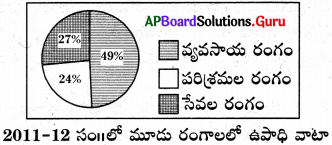
జవాబు:
పైన ఇవ్వబడిన గ్రాఫ్ వలన భారతదేశంలో ప్రజలు ఏ రంగంలో ఎంత శాతం మంది ఉపాధి పొందుతున్నారో తెలియజేయుచున్నది.
- వ్యవసాయ రంగంలో ఉపాధి పొందుతున్న వారి శాతం 49% మాత్రమే.
- పరిశ్రమల రంగంలో ఉపాధి పొందుతున్న వారి శాతం గణనీయంగా పెరుగుతూ 24%కి చేరుకున్నది.
- సేవల రంగంలో ఉపాధి పొందుతున్న వారి శాతం గణనీయంగా పరిశ్రమల రంగం కన్నా పెరుగుతూ వచ్చింది.
దీనిని బట్టి భారతదేశం ఆర్థికంగా అభివృద్ధి చెందుచున్నదని చెప్పవచ్చును.
ప్రశ్న 6.
ఈ క్రింది పట్టికను పరిశీలించి, దిగువ నివ్వబడిన ప్రశ్నలకు సమాధానములు వ్రాయండి.
వ్యవస్థీకృత, అవ్యవస్థీకృత రంగాల పాత్ర
| రంగం | వాటా (మొత్తంలో శాతం) | |
| ఉపాధి | స్థూల దేశీయోత్పత్తి | |
| వ్యవస్థీకృత | 8 | 50 |
| అవ్యవస్థీకృత | 92 | 50 |
| మొత్తం | 100 | 100 |
a) అవ్యవస్థీకృత రంగంలో ఉపాధి పొందుతున్న కార్మికుల శాతం ఎంత?
b) ఏ రంగంలో వారికి మంచి ఉద్యోగ భద్రత ఉంటుంది?
జవాబు:
a) 92%
b) వ్యవస్థీకృత రంగం
![]()
ప్రశ్న 7.
వ్యవస్థీకృత రంగంలో పనిచేసే కార్మికులకు కలుగు సౌకర్యాలను తెలుపుము.
జవాబు:
- ఉద్యోగ భద్రత
- నిర్ధారిత పనిగంటలు
- ఎక్కువ పనికి ఎక్కువ వేతనం
- జీతంతో కూడిన సెలవు
- సెలవులలో వేతనం
- భవిష్యనిధి
- వైద్య ప్రయోజనాలు
- పింఛను
- భద్రతతో కూడిన పనివాతావరణం
ప్రశ్న 8.
క్రింది ‘పై’ ను పరిశీలించి విశ్లేషించండి.
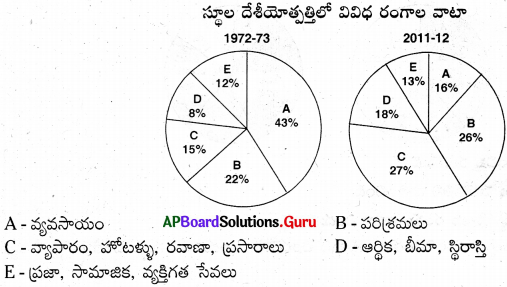
జవాబు:
- గ్రాఫ్ స్థూల దేశీయోత్పత్తిలో వివిధ రంగాల వాటాను తెలియచేస్తుంది.
- A – వ్యవసాయం, B – పరిశ్రమలు, C – వ్యాపారం, హోటళ్ళు, రవాణా, ప్రసారాలు, D – ఆర్థిక, బీమా, స్థిరాస్తి, E – ప్రజా, సామాజిక, వ్యక్తిగత సేవలు గురించి తెలియచేస్తాయి.
- 1972-73లో అధిక ఉత్పత్తి వ్యవసాయ రంగం నుండి వచ్చింది. అత్యల్ప ఆదాయం ఆర్ధిక, భీమా, స్థిరాస్థి నుండి వచ్చింది.
- 2011-12కు వచ్చేప్పటికి ఇది మార్పు చెంది వ్యాపారం, హోటళ్ళు, రవాణా, ప్రసారాల ఉత్పత్తి పెరిగి వ్యవసాయ రంగం వాటా తగ్గిపోయింది. పరిశ్రమలు రెండుసార్లు రెండవ స్థానంలోనే ఉంది.
- సేవారంగంలో ఉత్పత్తి పెరిగినట్లయితే దేశం అభివృద్ధి చెందుతుంది. కాబట్టి దానిని పెంచేటట్లు చూడాలి.
ప్రశ్న 9.
సంఘటిత రంగంలో పనిచేసే కార్మికులకు గల సౌకర్యాలేవి?
జవాబు:
సంఘటిత రంగంలో పనిచేసే కార్మికులకు గల సౌకర్యాలు:
- ఉద్యోగ భద్రత
- నిర్ణీత పనిగంటలు
- వేతనంతో కూడిన సెలవులు
- పని పరిసరాలలో భద్రత మొదలగునవి.
ప్రశ్న 10.
ప్రజలు అవ్యవస్థీకృత రంగంలో పనిచేయడానికి సాధారణంగా ఇష్టపడరు. ఎందువలన?
జవాబు:
- అవ్యవస్థీకృత రంగం చాలావరకు ప్రభుత్వ నియంత్రణలో ఉండదు.
- నియమ నిబంధనలు తరచు పాటించబడవు.
- ఉద్యోగాలు క్రమపద్ధతిలో ఉండవు.
- వేతనాలు తక్కువ.
- సెలవు పెట్టుకోవడం కష్టం.
- వేతనంతో కూడిన సెలవులు ఉండవు.
- ఉద్యోగ భద్రత ఉండదు.
- పని పరిస్థితులు సాధారణంగా బాగుండవు.
- పని ప్రదేశాలలో భద్రతా చర్యలు పాటించబడవు.
- ఆరోగ్య సమస్యలు తలెత్తుతుంటాయి.
ప్రశ్న 11.
గ్రామీణ ప్రాంతాలలో ఉపాధి అవకాశాలు పెరగటానికి మీరిచ్చే సూచనలు తెలపండి.
జవాబు:
గ్రామీణ ప్రాంతాలలో ఉపాధి అవకాశాలు పెరగటానికి సూచనలు :
- వ్యవసాయానికి ప్రభుత్వ మద్దతు అందించాలి.
- కుటీర పరిశ్రమలను ప్రోత్సహించాలి.
- గ్రామీణ ఉపాధి పథకాలను సమర్ధవంతంగా అమలు చేయాలి.
ప్రశ్న 12.
దిగువ నీయబడిన ‘పై’ చార్టులు పరిశీలించి, ప్రశ్నలకు సమాధానాలు రాయండి.
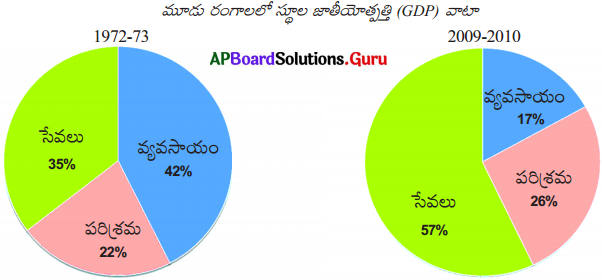
a) గణనీయ పురోగతి సాధించిన రంగమేది?
జవాబు:
సేవలు రంగం గణనీయ పురోగతిని సాధించింది.
b) స్థూల దేశీయోత్పత్తిలో వ్యవసాయ రంగం వాటా ఎందుకు తగ్గింది?
జవాబు:
వ్యవసాయ రంగంలో ఉత్పత్తి ఆశించినంతగా అభివృద్ధి చెందలేదు. అందువలన స్థూల దేశీయోత్పత్తిలో వ్యవసాయ రంగం వాటా తగ్గింది.
ప్రశ్న 13.
గ్రామీణ ప్రాంతాలలో ఉద్యోగ అవకాశాలు పెంచాల్సిన ఆవశ్యకత గురించి సంబంధిత అధికారికి లేఖ వ్రాయండి.
జవాబు:
జగిత్యాల్ To, గౌరవనీయులైన కలెక్టరుగారికి, ఎక్కువ మంది వలస రావడం వలన ఇక్కడ త్రాగు నీటి సమస్య మురికి వాడలు పెరగడం, కాలుష్యం పెరుగుతుంది. ఇక్కడ దొరికే అన్ని రకాల వస్తువుల ధరలు కూడా బాగా పెరిగాయి. కావున నా విన్నపం ఏమిటంటే గ్రామీణ ప్రాంతాలలో కూడా కొన్ని పరిశ్రమలను, ప్రభుత్వ, ప్రయివేటు కార్యాలయాలను ఏర్పాటు చేస్తు అక్కడి ప్రజలకు ఉపాధి లభించడంతోపాటు రోడ్డు మార్గాలు అభివృద్ధి చెందుతాయి. వలసలను నివారించవచ్చు. గ్రామాలు కూడా అభివృద్ధి చెంది మన జిల్లా ఇంకా బాగా అభివృద్ధి చెందుతుంది. ఇట్లు To, |
ప్రశ్న 14.
క్రింది వాటిలో వేరుగా ఉన్నదానిని గుర్తించండి. కారణం తెల్పండి.
పోస్ట్ మ్యాన్, చేపలు పట్టే వ్యక్తి, సైనికుడు, పోలీస్ కానిస్టేబుల్
జవాబు:
- ఇచ్చిన వానిలో వేరుగా ఉన్నది. – చేపలు పట్టే వ్యక్తి. కారణం :
- మిగిలిన మూడు పోస్ట్ మ్యాన్, సైనికుడు, పోలీస్ కానిస్టేబుల్’ సేవా రంగానికి చెందినవి. అలాగే వ్యవస్థీకృత రంగానికి చెందినవి.
ప్రశ్న 15.
క్రింద ఇచ్చిన చార్టులను పరిశీలించి క్రింది ప్రశ్నలకు సరియైన సమాధానములిమ్ము.
‘పై’ చార్టు : స్థూల దేశీయోత్పత్తిలో వివిధ రంగాల వాటా
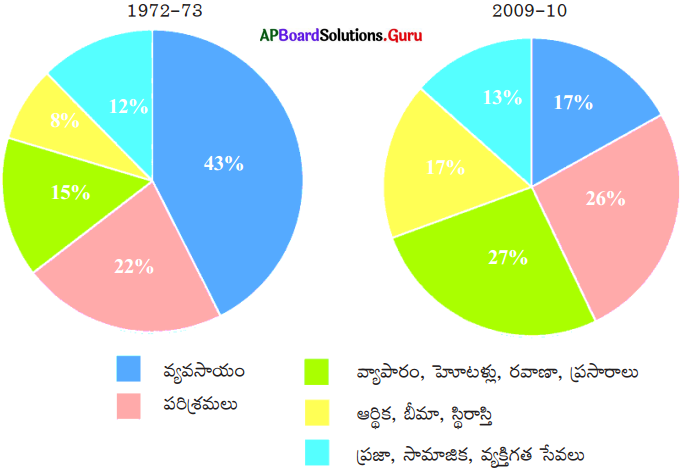
1) 1972-73 నుండి 2009-10 నాటికి GDPలో వ్యవసాయ రంగం వాటా పెరిగిందా, తగ్గిందా? ఎంత మేర?
జవాబు:
వ్యవసాయ రంగం వాటా (GDP) తగ్గింది, 43%-26% = 17% మేర తగ్గింది.
2) 2009-10 నాటికి GDPలో మొత్తం సేవల రంగం విలువ ఎంత శాతం వాటా కలిగి ఉంది?
జవాబు:
27% + 17% + 13% = 57% వాటా కలిగి ఉంది.
3) స్థూల దేశీయోత్పత్తిలో పరిశ్రమ రంగం వాటా 1972-73 నుండి 2009-10 నాటికి ఎంత మేర పెరిగింది?
జవాబు:
26% – 22% = 4% మేర పెరిగింది.
4) సేవా రంగంలోని ఏ సేవలు ఎక్కువ వృద్ధి చెందినాయి?
జవాబు:
వ్యాపారం, సూటళ్లు, రవాణా, ప్రసారాలు.
5) 37 సం||రాల కాలంలో వివిధ రంగాల వాటా మార్పుల గురించి ఏమి గమనించావు?
జవాబు:
37 సం||రాల కాలంలో వ్యవసాయ రంగం వాటా గణనీయంగా క్షీణించింది. పారిశ్రామిక రంగం వాటా కొంచెం పెరిగింది. సేవా కార్యకలాపాల్లోని మూడింట రెండు రంగాలలో గణనీయమైన వృద్ధి ఉంది.
ప్రశ్న 16.
పట్టిక : వ్యవస్థీకృత, అవ్యవస్థీకృత రంగాల పాత్రలు
| రంగం | వాటా (మొత్తంలో శాతం) | |
| ఉపాధి | స్థూల దేశీయోత్పత్తి | |
| వ్యవస్థీకృత | 8 | 50 |
| అవ్యవస్థీకృత | 92 | 50 |
| మొత్తం | 100 | 100 |
పైన ఇవ్వబడిన పట్టిక ఆధారంగా క్రింది ప్రశ్నలకు సరియైన సమాధానములిమ్ము.
1) వ్యవస్థీకృత రంగంలో ఎంత శాతం మంది ఉపాధి పొందుతున్నారు?
జవాబు:
8% మంది.
2) అవ్యవస్థీకృత రంగంలో ఎంత శాతం మంది ఉపాధి పొందుతున్నారు?
జవాబు:
92% మంది
3) స్థూల దేశీయోత్పత్తిలో వ్యవస్థీకృత రంగం వాటా ఎంత శాతం ఉంది?
జవాబు:
50%
4) స్థూల దేశీయోత్పత్తిలో అవ్యవస్థీకృత రంగం వాటా ఎంత శాతం ఉంది?
జవాబు:
50%
5) పై గణాంకాల ఆధారంగా ఏమి అర్థం అవుతున్నది?
జవాబు:
కేవలం 8 శాతం కార్మికులు భద్రతతో కూడిన మంచి ఉద్యోగం ఉండి, మొత్తం వస్తువులు, సేవల్లో 50% ఉత్పత్తికి దోహదం చేశారు.
10th Class Social 3rd Lesson 4 Marks Important Questions and Answers in Telugu Medium
ప్రశ్న 1.
స్థూల దేశీయోత్పత్తిని ఎలా లెక్కిస్తారు ? ఉదాహరణలతో వ్రాయండి.
(లేదా)
స్థూల జాతీయోత్పత్తి అనగానేమి? స్థూల జాతీయోత్పత్తిని ఎలా అంచనా వేస్తారు?
జవాబు:
- దేశ ఆదాయాన్ని లెక్కకట్టడంలో దేశంలో ఉత్పత్తి అయిన మొత్తం వస్తువులు, సేవల విలువను తీసుకుంటే దానిని ‘స్థూల దేశీయోత్పత్తి (జాతీయోత్పత్తి) అంటాం.
- వ్యవసాయ, పరిశ్రమ, సేవా రంగాలలో ఆర్థిక కార్యకలాపాలు చేపట్టే ప్రజలు పెద్దమొత్తంలో ఉత్పత్తిచేసే వస్తువుల / సేవల విలువే ఇది.
- ఆర్థికవేత్తలు ఉత్పత్తి అయిన వస్తువుల / సేవల సంఖ్య కాకుండా ఆయా వస్తువుల, సేవల విలువలు జోడిస్తారు.
- మాధ్యమిక వస్తువుల విలువలు కూడకుండా అంతిమ విలువలే లెక్కించే పద్ధతిలో స్థూల దేశీయోత్పత్తి లెక్కించవచ్చు.
ఉదా|| Kg రూ. 25 చొప్పున 100 Kg వడ్లు కొని మిల్లర్ కిలో రూ. 40 చొప్పున 80 Kg బియ్యం , కిలో రూ. 20 చొప్పున 20 Kg ఊక అమ్మడం. అవి కొన్న హోటల్ యజమాని ఇడ్లీ, దోశలతో రూ. 5000 సంపాదించడం.
ఈ ప్రక్రియలో మొత్తం అంతిమ విలువ రూ. 5000. - ప్రతి దశలో జోడించబడిన అదనపు విలువ మాత్రమే లెక్కించే మరో పద్ధతి స్థూల దేశీయోత్పత్తికి కలదు.

ప్రశ్న 2.
వ్యవస్థీకృత రంగం, అవ్యవస్థీకృత రంగంలో పనిచేస్తున్న కార్మికుల మధ్య భేదాలు తెల్పుము.జవాబు:
జవాబు:
| వ్యవస్థీకృత రంగం | అవ్యవస్థీకృత రంగం |
| 1) ప్రభుత్వ నియమ నిబంధనలను ఈ రంగంలోని సంస్థలు అనుసరిస్తాయి | 1) ఈ రంగంలోని సంస్థలు ప్రభుత్వ నియంత్రణలో ఉండవు. |
| 2) ఈ రంగంలోని కార్మికులకు ఉద్యోగ భద్రత ఉంటుంది. | 2) ఉద్యోగ భద్రత ఉండదు. |
| 3) ఆర్జిత సెలవులు, అనారోగ్య సెలవులు ఉంటాయి. | 3) అలాంటివి ఉండవు. |
| 4) వేతనాలు జీవనానికి సరిపడేంత ఉంటాయి. | 4) వేతనాలు తక్కువగా ఉంటాయి. |
| 5) భవిష్య నిధి, ఆరోగ్య బీమా లాంటి సౌకర్యాలు, ఉంటాయి. | 5) భవిష్యనిధి, బీమాలాంటివి ఉండవు. |
| 6) ప్రభుత్వ సంస్థలు, భారీతరహా పరిశ్రమలు మొదలైన వాటిల్లోని ఉద్యోగులు వ్యవస్థీకృత రంగం. | 6) చిన్న సంస్థలు, స్వయం ఉపాధి మొదలయిన వాటిల్లో ఉద్యోగులు అవ్యవస్థీకృత రంగం. |
| 7) ఈ రంగంలో ఉద్యోగాలను అందరూ కోరుకుంటారు. | 7) ఈ రంగంలో తప్పక ఉద్యోగాలు చేస్తుంటారు. |
ప్రశ్న 3.
ఈ రోజుల్లో ఆర్థిక వ్యవస్థలోని ఏ రంగములో ఉద్యోగావకాశాలు పెరుగుతున్నాయి ? కారణాలు తెల్పండి.
జవాబు:
- ఈ రోజుల్లో ఆర్థిక వ్యవస్థలోని ద్వితీయ, తృతీయ రంగాలలో ఉపాధి ఎక్కువ అయింది.
- గత 50 సంవత్సరాలుగా స్థూల దేశీయోత్పత్తిలోని వివిధ రంగాల వాటాలో వచ్చినంత మార్పు ఉపాధిలో రాలేదు. అయినప్పటికిని ద్వితీయ, తృతీయ రంగాలలో ఉపాధి మెరుగయ్యింది.
కారణాలు:
- ప్రణాళికాబద్ధ చర్యలు, ప్రభుత్వ చొచొరవ మొదలైన వాటితో పరిశ్రమలు అధికంగా స్థాపించబడటం వలన.
- స్వదేశీ, విదేశీ సాంకేతిక పరిజ్ఞానం అందిపుచ్చుకోవటం (పెంచుకోవటం) వలన.
- విద్యావకాశాలు మెరుగవ్వటం.
- ప్రపంచీకరణ వలన బహుళజాతి సంస్థలు ప్రవేశించటం వలన పరిశ్రమలు, సేవారంగం అభివృద్ధి చెందటం.
- అన్ని రకాల రవాణా సౌకర్యాలు మెరుగుపడటం.
- మేధోవలసలు పెరగడం.
- పొదుపు చర్యల వలన, ప్రపంచీకరణ కారణంగా స్వదేశీ, విదేశీ పెట్టుబడుల లభ్యత పెరగడం.
- శాస్త్ర, సాంకేతిక రంగాలలో నైపుణ్యాలను పెంపొందించే జాతీయ, అంతర్జాతీయ ప్రమాణాలతో కూడిన శిక్షణా సంస్థలు పెరగటం వలన.
![]()
ప్రశ్న 4.
మీ ప్రాంతంలో ఉపాధి అవకాశాలు కల్పించడానికి తీసుకోవలసిన చర్యలను సూచించండి.
జవాబు:
మా ప్రాంతంలో ఉపాధి అవకాశాలు కల్పించడానికి తీసుకోవలసిన చర్యలు :
- వ్యవసాయేతర ఉత్పత్తి కార్యకలాపాలను ప్రోత్సహించాలి.
- పాడి పరిశ్రమను అభివృద్ధి చేయడం.
- స్థానిక చేతివృత్తులను ప్రోత్సహించడం.
- బ్యాంకు రుణాల ద్వారా స్వయం ఉపాధి అవకాశాలను కల్పించడం.
ఉదా : పిండిమర, కిరాణాషాపు, హోటల్ మొ||నవి. - స్వీట్ల తయారీ, పచ్చళ్ళ తయారీ మొదలగు వాటిని ప్రోత్సహించి దగ్గరలోని మార్కెట్లకు తరలించేలా రవాణా వ్యవస్థను ఏర్పాటు చేయడం.
- ప్రభుత్వ సహాయంతో కుట్టుమిషన్ల పంపిణీ.
- కూరగాయల ప్రొసెసింగ్ పరిశ్రమ, పట్టుపురుగుల పెంపకం మరియు తేనె సేకరించి దగ్గరలోని మార్కెట్లలో అమ్మడం.
ప్రశ్న 5.
అవ్యవస్థీకృత రంగ కార్మికుల పరిస్థితులను మెరుగుపరచడానికి నీవు చేసే సూచనలేవి?
జవాబు:
అవ్యవస్థీకృత రంగ కార్మికుల పరిస్థితులను మెరుగుపరచడానికి సూచనలు :
- వేతనాల పెరుగుదల,
- సక్రమంగా వేతనాలు ఇవ్వడం,
- అదనపు పనికి అదనపు వేతనం,
- ఆర్జిత సెలవులు,
- పనిచేసే చోట అనుకూల సౌకర్యాలు కల్పించడం,
- పదవీ విరమణ ప్రయోజనాలు,
- ఉద్యో గ భద్రత,
- వైద్య, ఆరోగ్య సౌకర్యాలు.
ప్రశ్న 6.
“సేవారంగం అభివృద్ధి చెందినా ఆ రంగంలో అన్ని కార్యకలాపాలు సమానంగా పెరగటం లేదు. భారతదేశంలో సేవారంగంలో అనేక రకాల వ్యక్తులు ఉపాధి పొందుతున్నారు. ఒకవైపున బాగా చదువుకున్న, నైపుణ్యాలున్న వ్యక్తులకు ఉపాధి ఇచ్చే కొద్దిపాటి సేవలు ఉన్నాయి. ఇంకోవైపున చిన్న చిన్న దుకాణాలు నడిపేవాళ్ళు, మరమ్మతులు చేసేవాళ్ళు, రవాణా సేవలు అందించే వాళ్ళు పెద్ద సంఖ్యలో ఉన్నారు. వాళ్ళ జీవనం అతికష్టం మీద సాగుతుంది, అయినా మరోదారి లేక ఈ సేవలలో కొనసాగుతున్నారు.”
ప్రశ్న : “సేవారంగంలో పనిచేసే వారందరి జీవన పరిస్తితులు ఒకేలా లేవు.” వ్యాఖ్యానించండి.
జవాబు:
- సేవా రంగమునకు సంబంధించి వ్యవస్థీకృత రంగంలో పనిచేస్తున్న నైపుణ్యం గల కార్మికులు మెరుగైన వేతనాలు పొందుతున్నారు. కానీ వీరి సంఖ్య పరిమితంగా ఉంది.
- మరోవైపున అవ్యవస్థీకృత రంగంలోనే పనిచేస్తున్న అసంఖ్యాకమైన కార్మికులు కనీస వేతనాలు సైతం పొందలేక దుర్భరమైన పరిస్థితులలో జీవిస్తున్నారు.
- స్వయం ఉపాధి పొందుతున్నవారు, దుకాణదారులు, వలస కార్మికులు మొదలగు వారికి స్థిర ఉపాధి, మెరుగైన పని పరిస్థితులు, ఇతర సదుపాయాలు ఉండవు.
- నైపుణ్యాల లేమి వల్ల, ఉపాధి అవకాశాల కొరత వల్ల, ప్రత్యామ్నాయ అవకాశాలు లేకపోవడం వల్ల తప్పనిసరియై ఆయా వృత్తులలోనే కొనసాగుతున్నారు.
- ఈ విధమైన పరిస్థితులను పరిగణనలోకి తీసుకొని ప్రభుత్వాలు సరైన విధానాలు రూపొందించి సేవారంగంలో సంతులిత అభివృద్ధికి కృషి చేయాలి.
![]()
ప్రశ్న 7.
“అభివృద్ధి చెందిన దేశాలలో గత 50 సం||లుగా జరుగుతున్న పరిణామాలలో అభివృద్ధి పారిశ్రామిక రంగం నుండి సేవా రంగానికి మారడం ఒకటి. మొత్తం ఉత్పత్తిలో సేవారంగం వాటా పెరగడంతో దాని ప్రాముఖ్యత పెరిగింది. పనిచేసే వాళ్ళలో ఎక్కువ మంది సేవారంగంలో ఉపాధి పొందుతున్నారు. ఉత్పాదక కార్యకలాపాలలో అధిక భాగం ఇప్పుడు వస్తువుల ఉత్పత్తి కాకుండా సేవలు అందించడంలో ఉన్నాయి. అన్ని అభివృద్ధి చెందిన దేశాలలో ఇదే తీరు కనపడుతుంది.
ప్రశ్న: భారతదేశంలో కూడా ఇలాగే జరుగుతోందా? లేక భిన్నంగా ఉందా? మీ అభిప్రాయాన్ని వివరించండి.
జవాబు:
- ఆర్థిక రంగాల ప్రాధాన్యతా క్రమం భారతదేశంలో కూడా కొంతవరకూ అభివృద్ధి చెందిన దేశాల వలెనే ఉన్నది.
- కానీ కొన్ని ప్రధానమైన తేడాలు కూడా ఉన్నాయి.
- భారతదేశంలో కూడా ఇటీవల కాలంలో సేవారంగం చాలా ప్రాముఖ్యతను సంతరించుకుంటున్నది.
- కానీ, ఈనాటికీ దేశంలో అత్యధికులకు ఉపాధిని కల్పిస్తున్నది వ్యవసాయ రంగమే.
ప్రశ్న 8.
క్రింది పేరాగ్రాఫ్ ను చదివి, వ్యాఖ్యానించుము.
గత 50 సంవత్సరాలలో అభివృద్ధి చెందిన దేశాలలో పారిశ్రామిక రంగం నుంచి సేవల రంగానికి ప్రాధాన్యత మారుతోంది. మొత్తం ఉత్పత్తిలో సేవారంగం ప్రముఖ స్థానంలో ఉంది. పని చేసేవాళ్ళల్లో కూడా ఇప్పుడు ఎక్కువ మంది సేవల రంగంలో ఉపాధి పొందుతున్నారు. ఉత్పాదక కార్యకలాపాలలో అధిక భాగం ఇప్పుడు వస్తువుల ఉత్పత్తి కాకుండా సేవలు అందించడంలో ఉన్నాయి.
జవాబు:
పైన పేరాగ్రాను కనుక పరిశీలించినట్లయితే అభివృద్ధి చెందిన దేశాలలో పనిచేసే వారిలో ఎక్కువ మంది పారిశ్రామిక రంగం నుండి సేవల రంగానికి వలస వెళ్ళడం జరుగుతుంది. ఆర్థిక వ్యవస్థలో కూడా సేవా రంగం ప్రముఖపాత్రను పోషిస్తుంది అని గమనించవచ్చు. పనిచేసేవారు కూడా ఎక్కువ మంది సేవా రంగంలో ఉపాధి పొందుతున్నారు. ఉత్పాదక కార్యకలాపాలలో అధిక భాగం ఇప్పుడు వస్తువుల ఉత్పత్తి కాకుండా సేవలు అందించడంలో ఉన్నాయి అని చెప్పవచ్చు.
ఆర్థిక వ్యవస్థలో మూడు రంగాలు ఉన్నాయి. అవి వ్యవసాయ, పారిశ్రామిక మరియు సేవల రంగాలు. అభివృద్ధి చెందుతున్న దేశాలలో ఎక్కువ శాతం ప్రజలు వ్యవసాయ రంగం మీద మరియు అభివృద్ధి చెందిన దేశాలలో ఎక్కువ శాతం ప్రజలు పారిశ్రామిక రంగంలో ఉపాధి పొందడం మనం గమనిస్తున్నాం. కాని ఈ మధ్య కాలంలో అభివృద్ధి చెందిన మరియు చెందుతున్న దేశాలలో ప్రజలు పారిశ్రామిక రంగం నుండి సేవా రంగమునకు ఉపాధి కోసం తరలి వెళ్ళడం మనం గమనిస్తున్నాం. కారణం ఏమిటంటే వ్యవసాయ మరియు పారిశ్రామిక రంగాలలో ఉన్న భౌతిక శ్రమ సేవా రంగంలో లేకపోవడమే. కంప్యూటర్, లాప్టాప్లు వచ్చిన తరువాత ప్రజలు ఇంటి వద్ద కూర్చుని కూడా వారి సేవలను ఇవ్వడం జరుగుతుంది. అంతేకాకుండా సేవా రంగంలో GDP శాతం ఎక్కువగా ఉండటం మనం గమనించవచ్చు. ప్రజలకు ఆదాయం కూడా ఎక్కువగా ఉంది.
దేశ, విదేశాలలో సేవా రంగానికి ఎక్కువ ప్రాముఖ్యం ఉండటంతో మన ప్రజలు ఇతర దేశాలపట్ల ఎక్కువ ఆకర్షితులవు తున్నారు. ఈ రంగంలో ఉపాధితోపాటు భద్రత, గౌరవం కూడా లభిస్తున్నాయి. మొత్తం మీద సేవా రంగం దేశ ఆర్థికాభివృద్ధిలో తన వంతు పాత్రను పోషిస్తోంది.
ప్రశ్న 9.
A) దిగువ నీయబడిన సమాచారం ఆధారంగా మీ పరిశీలనను వ్రాయండి.
పట్టిక : భారతదేశంలో పరిశ్రమలవారీగా కార్మికుల వివరాలు నివాస స్థానం స్త్రీ, పురుషులు

జవాబు:
- గ్రామీణ కార్మికులలో ఎక్కువమంది వ్యవసాయరంగంలో ఉపాధి పొందుతున్నారు.
- పట్టణ ప్రాంత కార్మికులలో ఎక్కువమంది సేవారంగంలో ఉపాధి పొందుతున్నారు.
- వ్యవసాయ కార్మికులలో అత్యధికులు స్త్రీలు.
- సేవారంగంలో మహిళా కార్మికుల సంఖ్య తక్కువగా ఉన్నది.
- మొత్తం మీద అత్యధిక శాతం మందికి ఉపాధిని కల్పిస్తున్నది వ్యవసాయ రంగము.
- మొత్తం మీద అతి తక్కువ మందికి ఉపాధి కల్పిస్తున్నది పారిశ్రామిక రంగము.
ప్రశ్న 10.
క్రింది సమాచారాన్ని ఒక కమ్మీ రేఖాచిత్రం (బార్ గ్రాఫ్) లో చూపి, విశ్లేషించండి.
వివిధ రంగాలు – ఉపాధి (2009-10)
| రంగం | ఉపాధి (శాతంలో) |
| వ్యవసాయం | 53% |
| పరిశ్రమలు | 22% |
| సేవలు | 25% |
జవాబు:
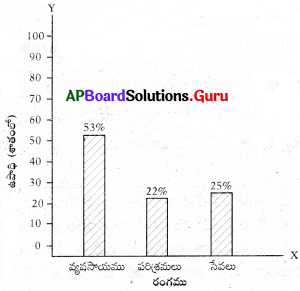
విశ్లేషణ :
- 2009-10లో అత్యధిక మందికి ఉపాధి కల్పిస్తున్న రంగం – వ్యవసాయం.
- ఉపాధికల్పనలో సేవారంగం రెండవ స్థానంలో కలదు.
- అతి తక్కువ మందికి ఉపాధి కల్పిస్తున్నది పారిశ్రామిక రంగం.
ప్రశ్న 11.
వ్యవస్థీకృత రంగంలో ఉద్యోగాలను అందరూ కోరుకుంటారు. కానీ ఈ రంగంలోని ఉపాధి అవకాశాలు చాలా నిదానంగా పెరుగుతున్నాయి. ఫలితంగా, అధిక శాతం కార్మికులకు చాలా తక్కువ వేతనానికి అవ్యవస్థీకృత ఉద్యోగాలు తప్పించి మరో దారి లేదు.
ప్రశ్న : అవ్యవస్థీకృత రంగం కన్నా వ్యవస్థీకృత రంగం మెరుగైనది అనుకుంటున్నారా? మీ అభిప్రాయం తెలుపండి.
జవాబు:
వ్యవస్థీకృతరంగం మెరుగైనది – అభిప్రాయం :
- అవును. అవ్యవస్థీకృత రంగం కంటే వ్యవస్థీకృత రంగం మెరుగైనదని భావిస్తాను.
- వ్యవస్థీకృతరంగంలో క్రమబద్ధమైన ఉపాధి షరతులు ఉండి నమ్మకంగా పని ఉంటుంది.
- ప్రభుత్వ నియమ నిబంధనలు పాటించబడతాయి.
- ఈ రంగంలో కార్మికులకు ఉద్యోగ భద్రత ఉంటుంది.
- వారు నిర్ధారిత పనిగంటలు మాత్రమే పనిచేస్తారు.
- వారికి జీతంతో కూడిన సెలవు, సెలవులలో వేతనం, భవిష్యనిధి వంటి ప్రయోజనాలు ఉంటాయి.
![]()
ప్రశ్న 12.
నేటి కాలంలో అవ్యవస్థీకృత రంగంలో పనిచేసేవారు ఎదుర్కొంటున్న సమస్యలను వివరించుము.
జవాబు:
నేటి కాలంలో అవ్యవస్థీకృత రంగంలో పనిచేసేవారు ఎదుర్కొంటున్న సమస్యలు
- జీతాలు తక్కువగా ఉంటాయి.
- ఉద్యోగ భద్రత ఉండదు.
- ఎక్కువ పనికి ఎక్కువ వేతనం ఉండదు.
- ఆర్జిత సెలవులు ఉండవు
- సాధారణ సెలవులు ఉండవు
- అనారోగ్యపు సెలవులు ఉండవు.
- వైద్య సౌకర్యాలు ఉండవు.
- భవిష్యనిధి, ఆరోగ్య బీమా లాంటి సౌకర్యాలు ఉండవు,
ప్రశ్న 13.
దిగువ ఇచ్చిన గ్రాఫ్ ను పరిశీలించి, విశ్లేషించండి. .
గ్రాఫ్ : మూడు రంగాల వాటా – ఉపాధి మరియు స్థూల దేశీయోత్పత్తి 2015-16
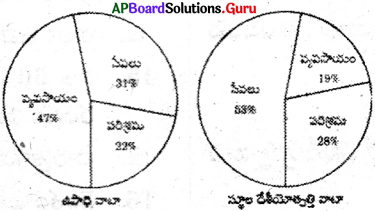
జవాబు:
పైన ఇవ్వబడిన గ్రాఫ్ వలన భారతదేశంలో ప్రజలు ఏ రంగంలో ఎంత శాతంమంది ఉపాధి పొందుతున్నారో తెలియజేయుచున్నది.
- ఉపాధి వాటాలో వ్యవసాయ రంగం 47% ఉన్నప్పటికి, స్థూల దేశీయ ఉత్పత్తిలో 19% మాత్రమే ఉంది.
- కాని సేవల ఉపాధి వాటా 31% మాత్రమే ఉన్నప్పటికి, స్థూల దేశీయోత్పత్తిలో 53% గా అగ్రగణ్యంలో ఉంది.
- పరిశ్రమల వాటాలలో ఉపాధి వాటాకు, స్థూల దేశీయోత్పత్తి వాటాకు పెద్దగా భేదం లేదు.
- సేవల రంగంలో స్థూల దేశీయోత్పత్తి వాటా అన్ని రంగాల కంటే ఎక్కువగా ఉన్నది.
దీనిని బట్టి భారతదేశం ఆర్థికంగా అభివృద్ధి చెందుచున్నదని చెప్పవచ్చును.
ప్రశ్న 14.
దిగువ గ్రాఫ్ లను పరిశీలించి మీ విశ్లేషణను రాయండి.

జవాబు:
- పైన ఇవ్వబడిన గ్రాఫ్ వలన 2009-10 లో భారతదేశంలో ప్రజలు ఏ రంగంలో ఎంత శాతం మంది ఉపాధి పొందుతున్నారో, ఏ రంగం నుండి ఎంత (GDP) (వాటా) నో తెలుసుకోవచ్చు.
- ఉపాధి వాటాలో వ్యవసాయ రంగం 53% ఉన్నప్పటికీ, స్థూల దేశీయోత్పత్తిలో 17% మాత్రమే ఉంది.
- కాని సేవల ఉపాధి వాటా 25% మాత్రమే ఉన్నప్పటికీ, స్థూల దేశీయోత్పత్తిలో 57% గా అగ్రగణ్యంలో ఉంది.
- పరిశ్రమల వాటాలలో ఉపాధి వాటాకు (22%), స్తూల దేశీయోత్పత్తి వాటాకు (26%) పెద్దగా భేదం లేదు.
- సేవల రంగంలో స్థూల దేశీయోత్పత్తి వాటా అన్ని రంగాల కంటే ఎక్కువగా ఉన్నది.
- దీనిని బట్టి భారతదేశం ఆర్థికంగా అభివృద్ధి చెందుచున్నదని చెప్పవచ్చును.
ప్రశ్న 15.
ఆర్థికవ్యవస్థలోని వివిధ రంగాల గురించి వివరించుము.
జవాబు:
ఆర్థికవ్యవస్థలోని రంగాలు : ఈ పనులను ప్రధానంగా మూడు రంగాలుగా విభజిస్తారు.
- ఉత్పత్తి ప్రక్రియలో ప్రకృతి ప్రధాన పాత్ర వహించే వ్యవసాయం, మత్స్య పరిశ్రమ, అటవీ, గనులకు సంబంధించిన పనులు.
- యంత్రాలు, పరికరాలు ఉపయోగించి వస్తువులు ఉత్పత్తి చేయడం, ఇతర పరిశ్రమలు.
- వస్తువులను నేరుగా తయారుచేయకుండా వస్తువుల ఉత్పత్తికి, ప్రజలకు అవసరమైన సేవలు అందించే కార్యకలాపాలు.
ప్రశ్న 16.
సేవలలోని వివిధ రకాల గురించి ఉదాహరణలతో వివరించుము.
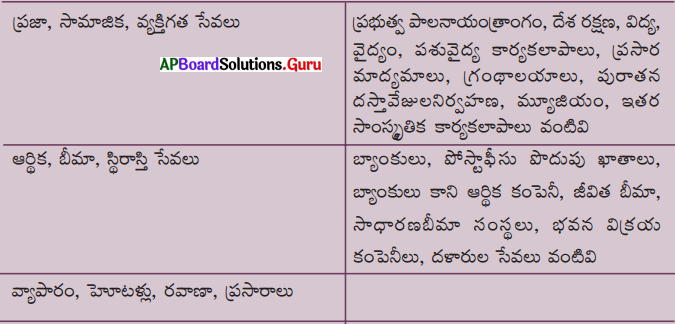
జవాబు:
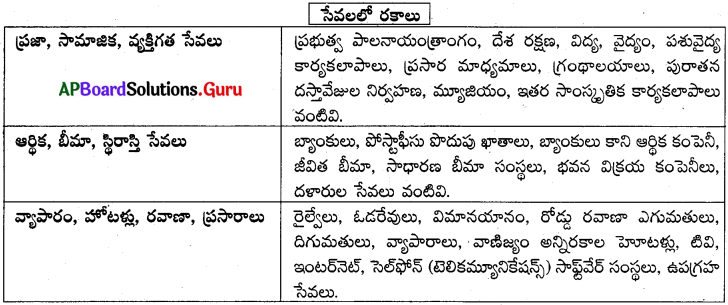
ప్రశ్న 17.
1972-73, 2009-10 మధ్య ఉత్పత్తి, ఉపాధిలో వచ్చిన మార్పుల గురించి చర్చించుము.
జవాబు:
- ఈ కాలంలో పారిశ్రామిక ఉత్పత్తి తొమ్మిది రెట్లు పెరిగింది, కానీ పారిశ్రామిక ఉపాధి మూడు రెట్లు మాత్రమే పెరిగింది.
- సేవల రంగంలోనూ ఇదే పరిస్థితి. సేవా రంగంలో ఉత్పత్తి 14 రెట్లు పెరిగింది కానీ ఉపాధి మాత్రం 5 రెట్లు పెరిగింది.
- దీని ఫలితంగా దేశంలోని కార్మికులలో సగం కంటే ఎక్కువమంది వ్యవసాయ రంగంలో ఉండి ఆరింట ఒక వంతు ఉత్పత్తికి మాత్రమే దోహదం చేస్తున్నారు.
- దీనికి విరుద్ధంగా స్థూల దేశీయోత్పత్తిలో 75 శాతం వాటా ఉన్న పారిశ్రామిక, సేవా రంగాలు మొత్తం కార్మికులలో దాదాపు సగానికి మాత్రమే ఉపాధి కల్పిస్తున్నాయి.
- 37 సంవత్సరాల కాలంలో వ్యవసాయ రంగం వాటా గణనీయంగా క్షీణించింది.
- స్థూల దేశీయోత్పత్తిలో పారిశ్రామిక రంగం ఉత్పత్తి వాటా కొంచెం పెరిగింది.
- ఇందుకు విరుద్ధంగా సేవా కార్యకలాపాలలోని మూడింట రెండు రంగాలలో గణనీయమైన వృద్ధి ఉంది.
ప్రశ్న 18.
రక్షణ అవసరమైన అవ్యవస్థీకృత కార్మికులు ఎవరు? రక్షణ ఎందుకవసరం?
జవాబు:
- గ్రామీణ ప్రాంతాలలో వీళ్లు భూమిలేని వ్యవసాయ కూలీలు, సన్న, చిన్నకారు రైతులు, కౌలుదారులు, చేనేత, కమ్మరం, వడ్రంగం, కంసాలి వంటి చేతివృత్తుల వాళ్లు.
- భారతదేశంలోని గ్రామీణ ప్రాంతంలోని 80 శాతం కుటుంబాలు సన్న, చిన్నకారు రైతుల కిందకు వస్తాయి.
- ఇటువంటి రైతులకు సకాలంలో విత్తనాలు, వ్యవసాయ ఉత్పాదకాలు, రుణసదుపాయాలు, నిల్వ సౌకర్యాలు, విక్రయ కేంద్రాలు వంటి వాటి ద్వారా మద్దతు అందించాలి.
- వ్యవసాయ కూలీలకు కనీస కూలీ, తగినంత పని అందాలి.
- పట్టణ ప్రాంతాలలో చిన్నతరహా పరిశ్రమలు, భవన నిర్మాణ, వ్యాపారం, రవాణా వంటి వాటిలో రోజువారీ కూలీలు, బజారులో అమ్మకాలు చేసే వాళ్లు, బరువులు మోసేవాళ్లు, చిత్తుకాగితాలు ఏరేవాళ్లు, బట్టలు కుట్టేవాళ్లు అవ్యవస్థీకృత రంగ కార్మికులు అవుతారు.
- ముడి సరుకుల కొనుగోలుకు, ఉత్పత్తులు అమ్ముకోటానికి చిన్నతరహా పరిశ్రమలకు కూడా ప్రభుత్వ మద్దతు కావాలి.
- పట్టణ, గ్రామీణ ప్రాంతాలలోని రోజువారీ కూలీలకు రక్షణ కావాలి.
- షెడ్యూల్ కులాలు, తెగలు, వెనకబడిన తరగతులకు చెందిన అధికశాతం కార్మికులు అవ్యవస్థీకృత రంగంలో ఉన్నారు.
- ఈ వర్గాలకు చెందిన మహిళల పరిస్థితి మరింత దారుణంగా ఉంటుంది. పని సరిగా దొరకకపోవటం, తక్కువ వేతనం ఉండటమే కాకుండా ఈ కార్మికులు సామాజిక వివక్షతకు కూడా లోనౌతారు.
- కాబట్టి ఆర్థిక, సామాజిక అభివృద్ధికి అవ్యవస్థీకృత రంగ కార్మికులకు రక్షణ, మధతు అవసరం.
ప్రశ్న 19.
పట్టిక : భారతదేశంలో పరిశ్రమల వారీగా కార్మికుల వివరాలు, 2009-2010 (%)

పట్టికని జాగ్రత్తగా అధ్యయనం చేసి కింది ప్రశ్నలకు సమాధానాలు ఇవ్వండి.
1. ఏ రంగంలో స్త్రీలు అధికంగా పాల్గొంటున్నారు?
2. కార్మికులు తక్కువగా ఉన్న రంగం ఏది? ఎందుకు?
3. సేవా రంగంలో ఉపాధి పొందుతున్న వారిలో ఎక్కువమంది ఎక్కడ నివాసం ఉంటున్నారు?
4. పారిశ్రామిక రంగంలో స్త్రీలు తక్కువగా ఉండడానికి కారణమేంటి?
జవాబు:
- వ్యవసాయ రంగంలో స్త్రీలు అధికంగా పాల్గొంటున్నారు.
- కార్మికులు తక్కువగా ఉన్న రంగం పారిశ్రామిక రంగం. కారణం దేశం పారిశ్రామికంగా బాగా అభివృద్ధి చెందకపోవడం.
- సేవారంగంలో ఉపాధి పొందుతున్న వారు అధికంగా పట్టణాలలో నివాసం ఉంటున్నారు.
- పారిశ్రామిక రంగంలో స్త్రీలు తక్కువగా ఉండటానికి కారణాలు : పనిగంటలు షిఫులుగా ఉండటం మరియు శారీరక శ్రమతో కూడిన పనులు చాలా ఉండటం.
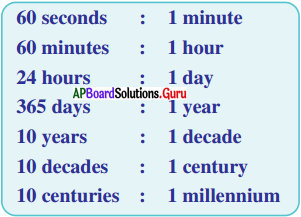
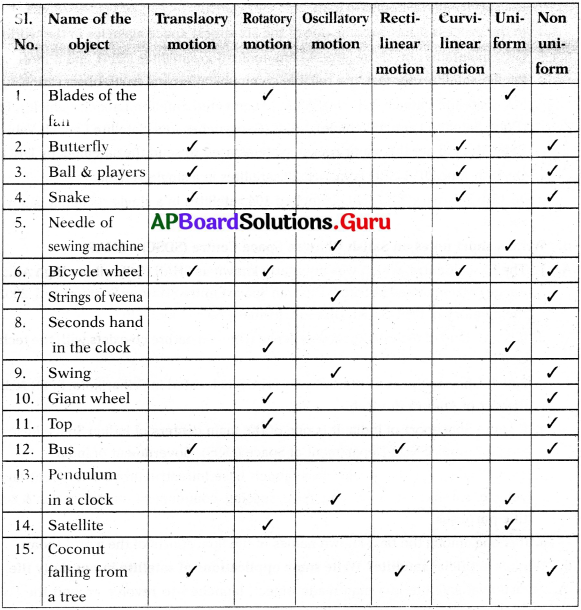
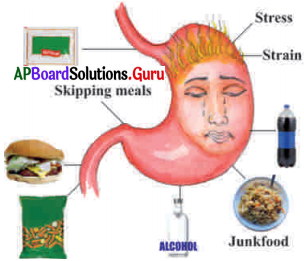
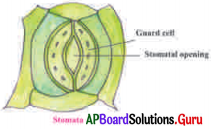
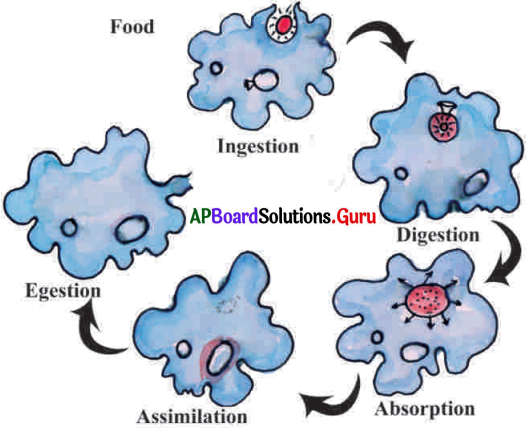

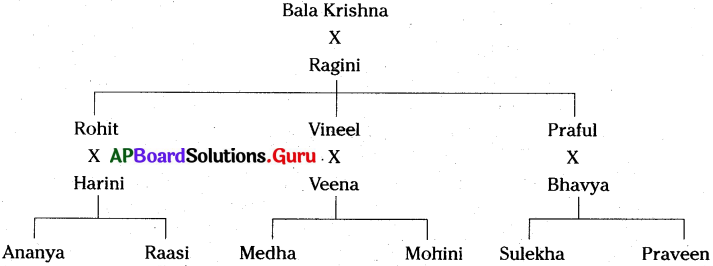
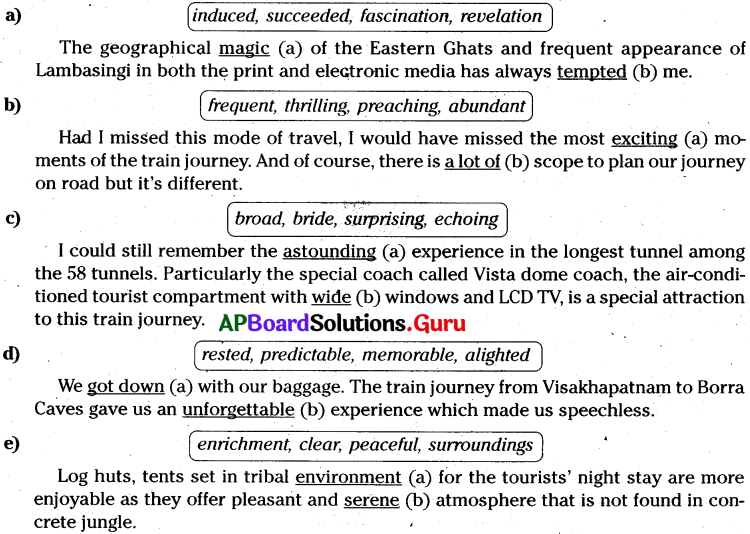



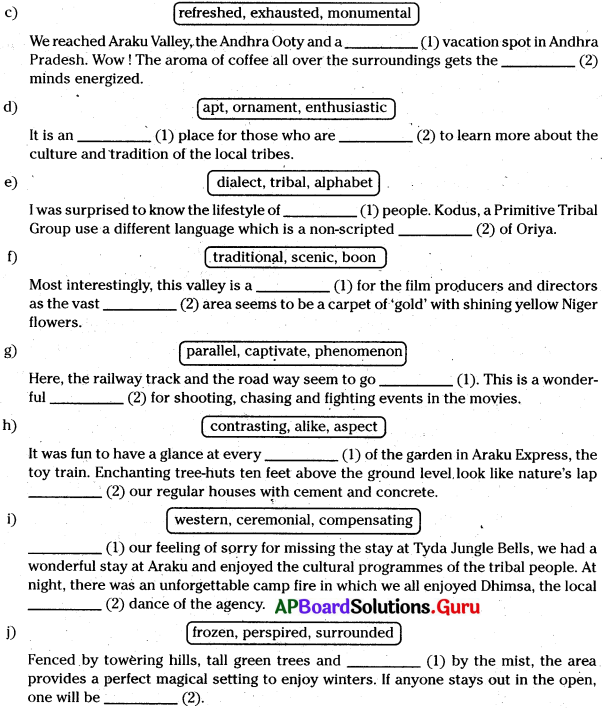


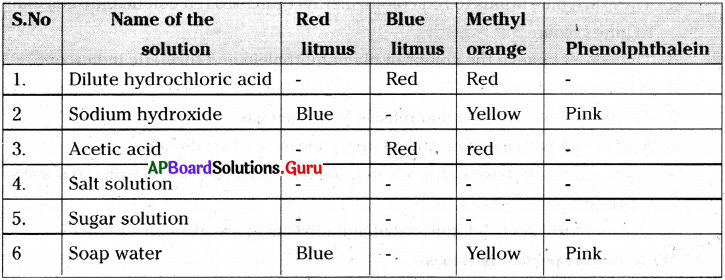
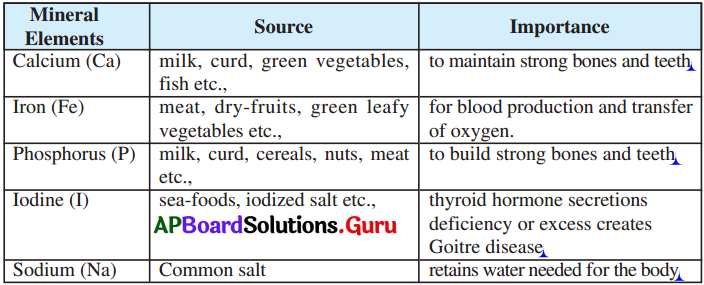
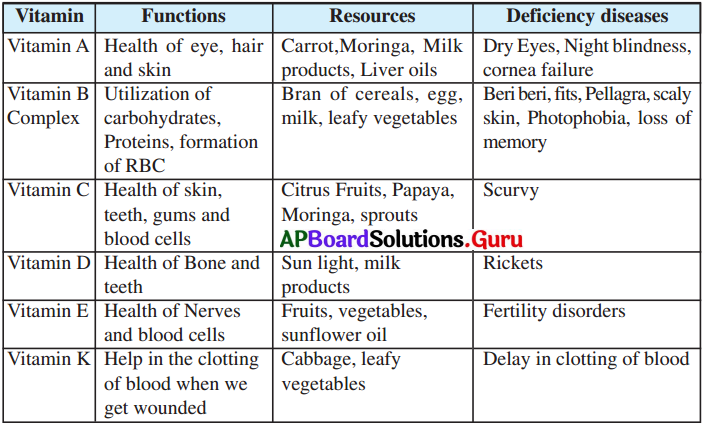
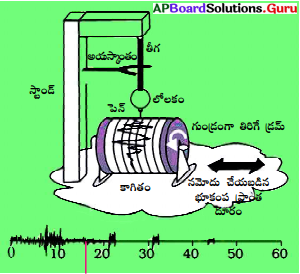
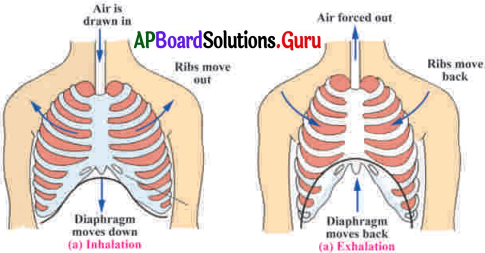
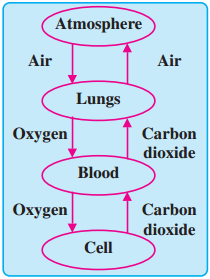
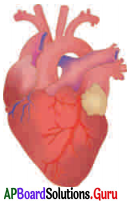
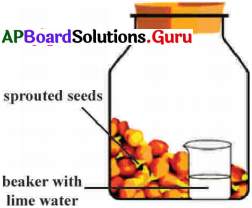
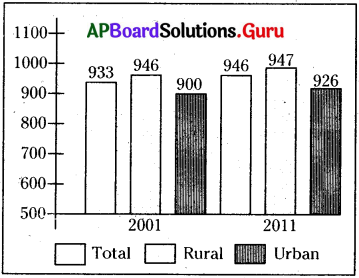
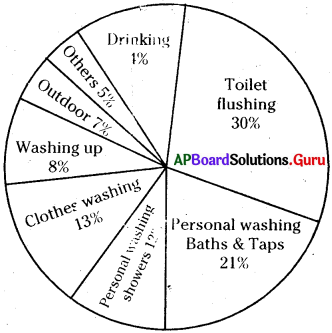
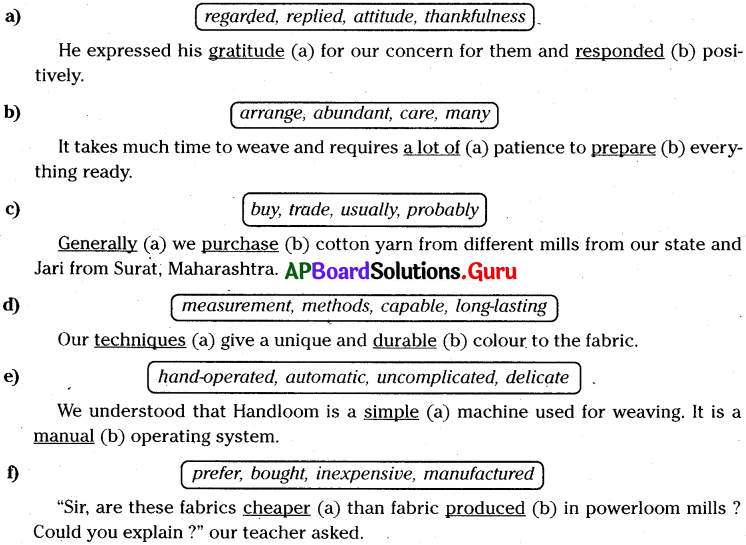
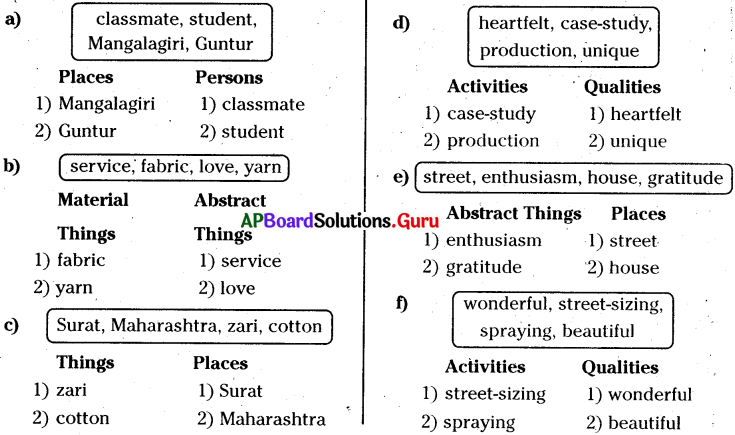
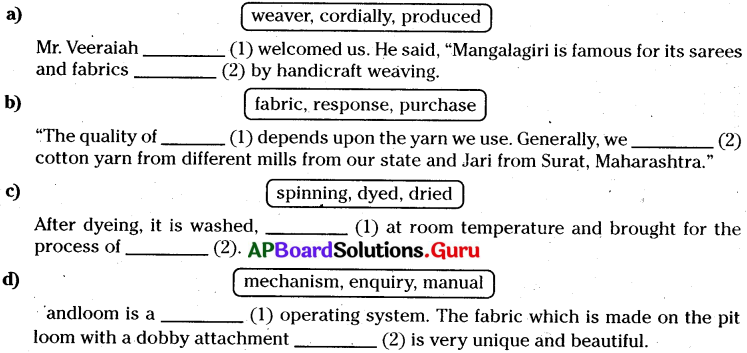


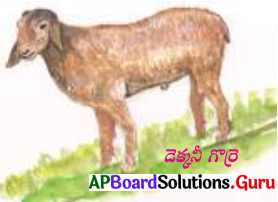
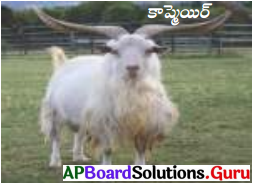
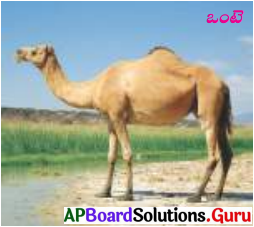

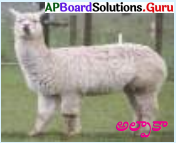
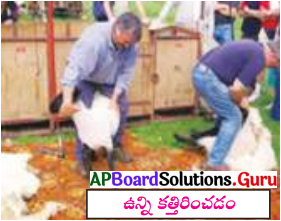
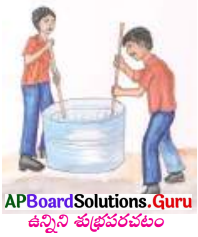
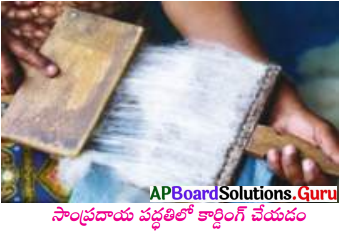
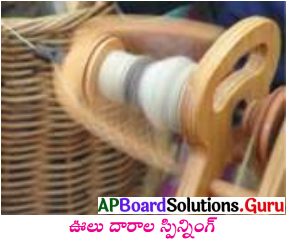
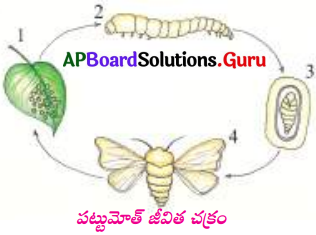

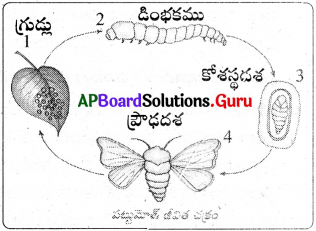
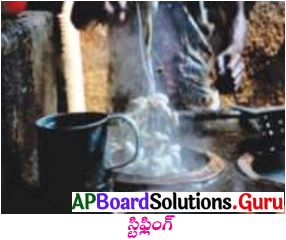

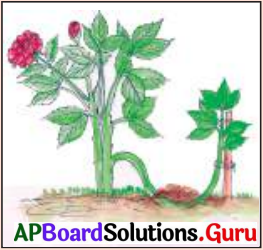

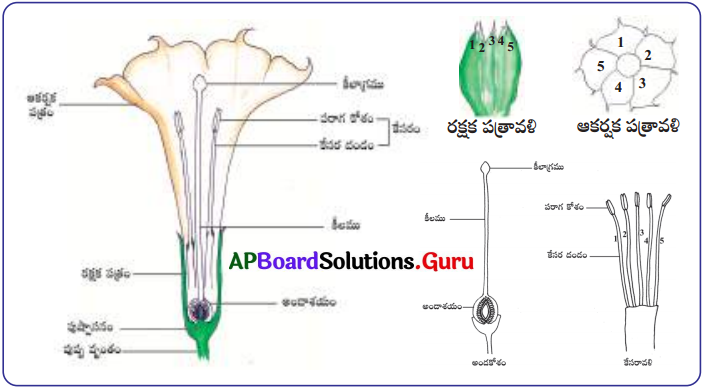

 ఈ పటం సూచించునది
ఈ పటం సూచించునది ఈ విత్తనం ఈ క్రింది వానిలో దేని ద్వారా వ్యాపిస్తుంది?
ఈ విత్తనం ఈ క్రింది వానిలో దేని ద్వారా వ్యాపిస్తుంది? ప్రక్క పటంలో X, Y లు సూచించునవి
ప్రక్క పటంలో X, Y లు సూచించునవి

